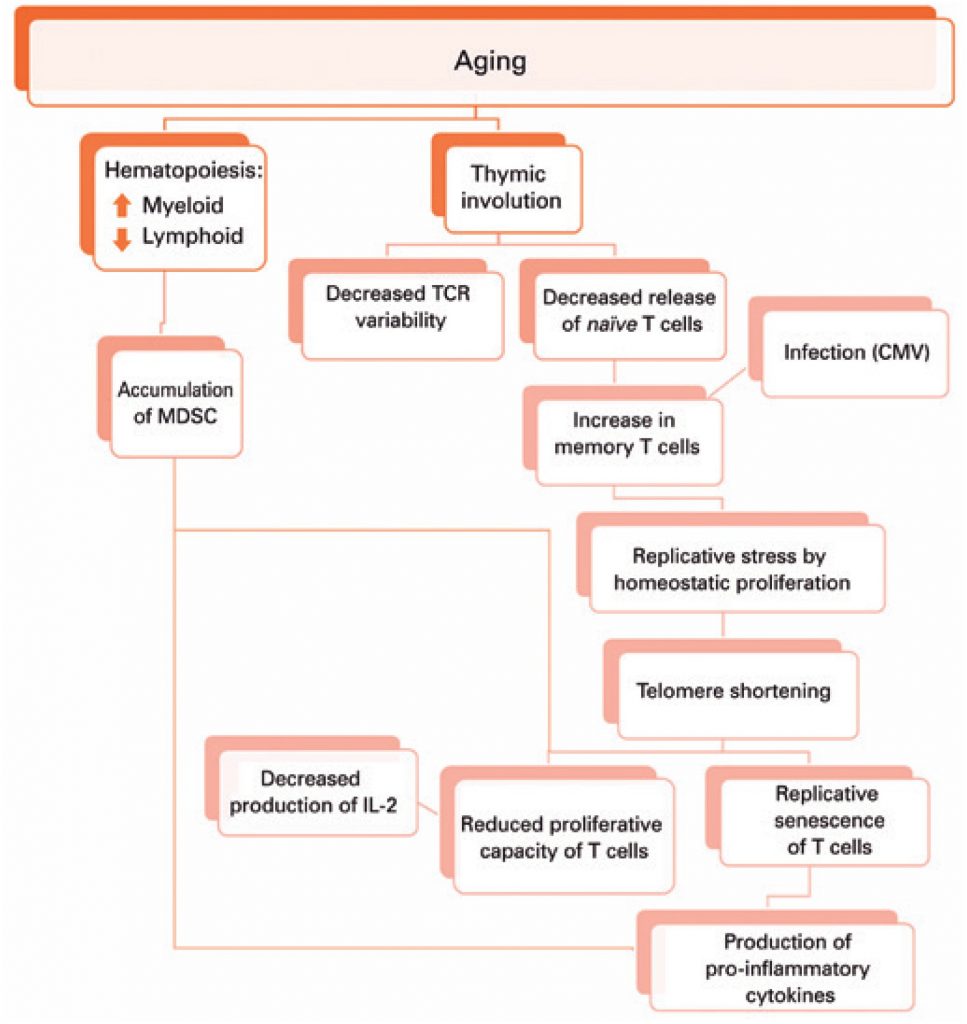einstein (São Paulo). 02/May/2019;17(2):eRB4733.
Immunosenescence: participation of T lymphocytes and myeloid-derived suppressor cells in aging-related immune response changes
DOI: 10.31744/einstein_journal/2019RB4733
ABSTRACT
Healthy aging is partly related to appropriate function of the immune system. As already reported, some changes in this system are observed, including reduced number and repertoire of T cells due to thymic involution, accumulation of memory T cells by chronic infections, homeostatic proliferation compensating for the number of naïve T cells, decreased proliferation of T cells against a stimulus, telomere shortening, replicative senescence of the T cells, and inflammaging, besides the accumulation of myeloid-derived suppressor cells. The purpose of this article is to clarify each of these changes, aiming to minimize limitations of immunosenescence. If such associations can be established, these cells may be used as early and less invasive markers of aging-related diseases, as well as to indicate interventions, evaluate the efficacy of interventions and be a tool to achieve longevity with quality of life.
1,947


